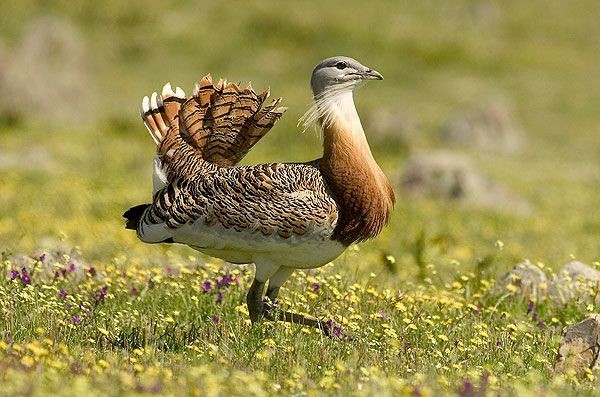Andalucia is a popular destination for birders for many reasons:
- There are cheap flights to places like Sevilla, Jerez, Malaga, Almeria or even Faro on the Portuguese side of the border
- There are spectacular birding opportunities such as watching raptors migrating across the Straits of Gibraltar or huge numbers of waterbirds (and raptors) in the wetlands in and around the Coto Doñana.
- And there are a number of special birds that are difficult to find in the rest of Europe. Here are some notes to give you the best chance of catching up with some of those key species.
Red-knobbed Coot
Thanks largely to the release of birds from a captive breeding programme, Red-knobbed Coot is now easier to see in Andalucia than ever before. Perhaps the best site is at Laguna la Batusca where they can be reliably seen at remarkably close range. Around the Coto Doñana the best site is the lake of Cañada de Rianzuela but there's also a chance at other spots such as the Jose Valverde centre or the Trebujena marismas. They can be tricky to see as they tend to stay close to edges of a wetland, often amongst the reeds. Hence at some sites, such as the Laguna de Medina and the Laguna Dulce de Zorilla, I only managed to hear them on my visit last spring. Other sites where released birds might be seen are Laguna de los Palos and Laguna de Rincon.

Red-knobbed Coot, Spain (Photo: Brian Irvine)
White-headed Duck
Thankfully, gone are the days when there were only 22 pairs of this iconic species in the whole of Europe. Nowadays they are much more numerous and should be easy to see at several sites (except when these sites dry out and become birdless). Perhaps the best site is Cañada de las Norias where you can expect exceptionally close views, or Laguna de Medina where they often swim close to the terrific little hide. Around Doñana, at least in winter, you should see them at the Laguna de Tarelo or Cañada de Rianzuela, sites where they sometimes breed. Other reliable sites include Laguna Salada de Zorilla, Almeria de Adra, Laguna de El Portil, Laguna de Rincon and Laguna de Zoñar.
Black-shouldered Kite
Another increasing species, having spread across the border from Portugal. The greatest numbers are seen in winter, especially at La Janda where up to 30 have been counted. Last winter I also saw four birds in a day on the Coto Doñana and two near the village of La Lantejuela. In summer one of the best places to look is along the Corredor Verde.

Black-shouldered Kite, Spain (Photo: Steve Fletcher)
Spanish Imperial Eagle
Sadly declining, so much trickier to find. Small numbers are present all year on the Coto Doñana; try looking for them around the Madre de las Marismas or near the Lucio del Cangrejo or the Lucio del Membrillo or from Dehesa de Abajo. Several pairs also breed in the Sierra del Norte, north of Sevilla. Try scanning from the car park at Mirador Puerto del Robledo. In winter they are regularly seen at La Janda and occasionally at Laguna de Taraje.
Rüppell's Vulture
These are now seen regularly in the areas around Tarifa and Algeciras. Some sightings are of birds migrating with Griffon Vultures over raptor watchpoints such as Cigueña Negra or El Algarrobo, although they can also be spotted amongst Griffons over La Janda.
Great Bustard
Until quite recently there was a small breeding population at La Janda but the last of these died in 2006. Hence it is now extinct as a breeding species in Andalucia but there's still a chance of seeing them in winter. Perhaps the best site is just south of the village of La Lantejuela. You can get local help to find these birds by contacting info@birdingsevilla.com.

Great Bustard, Spain (Photo: John Gardner)
Lesser Flamingo
Worth looking for at the Laguna de Fuente de Piedra where up to 7 have been counted amongst the thousands of Greater Flamingos and at least one pair has attempted to breed.
The sites mentioned in this article are described, and mapped, in detail in Dave's new book Finding Birds in Andalucia which is available from our estore, along with his accompanying DVD of the same title.

